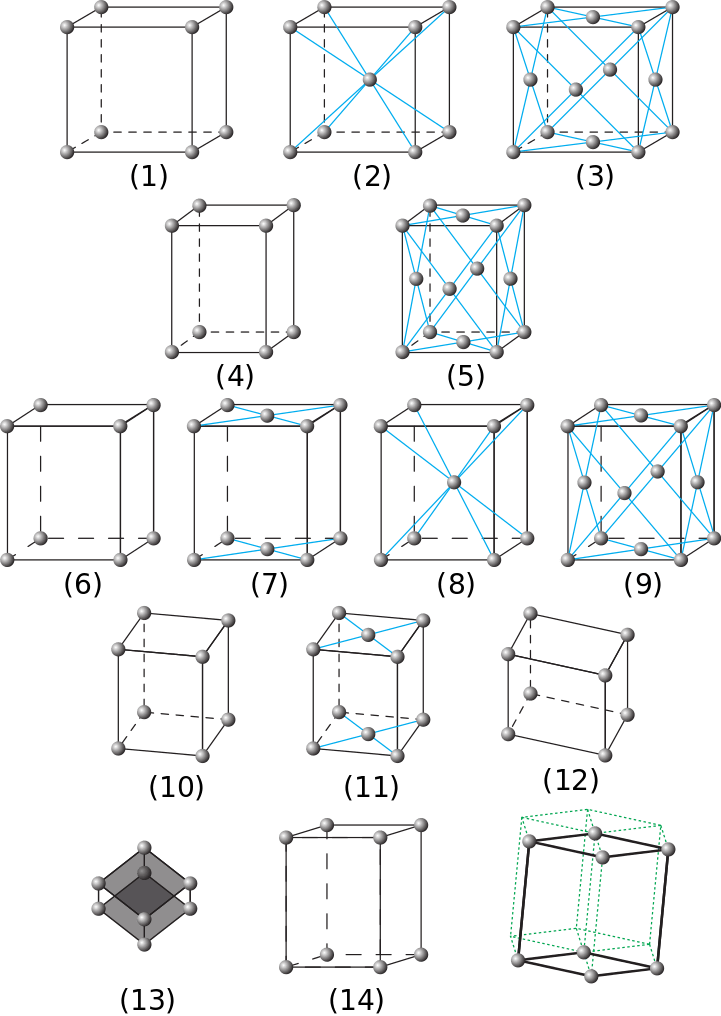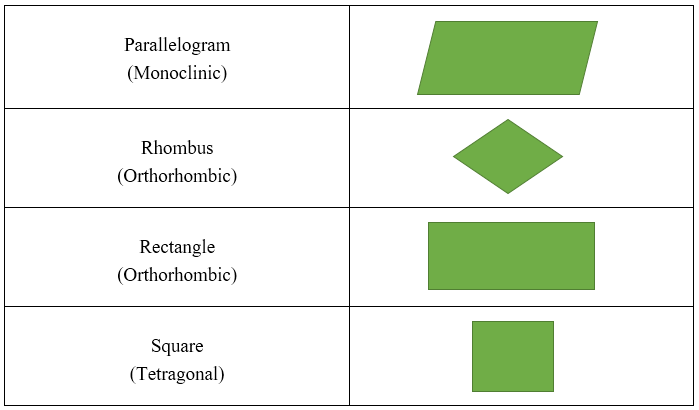Difference Between Unit Cell and Primitive Cell
Table of Contents
Key Difference – Unit Cell vs Primitive Cell
Unit cell of a lattice is the smallest unit that represents all the constituents in a crystal system and their arrangement. The unit cell is the smallest repetitive unit of a lattice. A primitive cell is the smallest possible unit cell of a lattice. Therefore, the primitive cell is a type of unit cell. The key difference between unit cell and primitive cell is that unit cell has parallelepiped geometry whereas 2D primitive cell has parallelogram geometry and 3D primitive cell has parallelepiped geometry.
CONTENTS
1. Overview and Key Difference
2. What is a Unit Cell
3. What is a Primitive Cell
4. Side by Side Comparison – Unit Cell vs Primitive Cell in Tabular Form
5. Summary
What is a Unit Cell?
Unit cell is the smallest group of atoms that has the overall symmetry of a crystal, and from which the entire lattice can be built up by repetition in three dimensions. Therefore, unit cells are the repeating units of crystal lattices.
A unit cell is described using lattice parameters and lattice points. Lattice parameters are lengths between edges of nit cell (given by a, b and c symbols) and angles of the unit cell (given by α, β and γ symbols). Lattice points are atoms, molecules or ions from which the lattice is made of.
Unit cell has a geometry known as parallelepiped (a 3D figure formed from 6 parallelograms). This geometry is described by the six lattice parameters (mentioned above). The positions of lattice points are given by fractional coordinates denoted by xi, yi and zi, which are measured from a reference point. According to Auguste Bravais (1850), there are 14 types of lattices, known as Bravais lattices. The unit cells of these Bravais lattices are as follows.

Figure 1: Unit Cells of 14 Bravais Lattices
The names of unit cells (1-14) in the above image are given below. (Here, P refers to “primitive centering”, C refers to “centered on a single phase” and I refers to “body centered” whereas F refers to “face centered”).
What is a Primitive Cell?
A primitive cell in chemistry is the smallest possible unit cell of a lattice, having lattice points only at each of its eight vertices. Hence, it is the simplest form of unit cells. It is a structural representation of a lattice (a crystal system) that can be used to characterize a lattice. Therefore, the primitive cell is a primitive unit. The primitive cell can be drawn in either two-dimensional or three-dimensional form.
There are two types of primitive cells: two-dimensional primitive cells and three-dimensional primitive cells. The two-dimensional primitive cells are parallelograms. This means, there can be orthogonal angles, equal lengths or both in these two-dimensional primitive cells. Types of primitive cells are as follows.
A three-dimensional primitive cell is known to be parallelepiped (a 3D figure formed from 6 parallelograms). It has orthogonal angles, equal lengths or both. Types of three-dimensional primitive cells are listed below.
What is the Difference Between Unit Cell and Primitive Cell?
Unit Cell vs Primitive Cell | |
| A unit cell is the smallest group of atoms which has the overall symmetry of a crystal, and from which the entire lattice can be built up by repetition in three dimensions. | A primitive cell in chemistry is the smallest possible unit cell of a lattice, having lattice points at each of its eight vertices only. |
| Geometry | |
| Unit cell has parallelepiped geometry. | 2D primitive cell has parallelogram geometry whereas 3D primitive cell has parallelepiped geometry. |
| Shape | |
| Unit cell is a three-dimensional structure. | Primitive cell can be given as a two-dimensional structure or three-dimensional structure. |
Summary – Unit Cell vs Primitive Cell
A primitive cell is a type of unit cell. A unit cell is the smallest repetitive unit of a crystal system that represents the repeating pattern of a lattice. The key difference between unit cell and primitive cell is that the unit cell has parallelepiped geometry whereas 2D primitive cell has parallelogram geometry and 3D primitive cell has parallelepiped geometry.
Reference:
1. “Primitive cell.” Wikipedia, Wikimedia Foundation, 28 Feb. 2018, Available here.
2. “Unit Cell, Primitive Cell and Wigner-Seitz Cell.” Unit Cell, Primitive Cell and Wigner-Seitz Cell | Physics in a Nutshell, Available here.
3. “Categories of Solids.” Unit Cells, Bodner Research Lab, Available here.
Image Courtesy:
1. “Bravais lattices” By Napy1kenobi – Own work (CC BY-SA 3.0) via Commons Wikimedia
ncG1vNJzZmivp6x7pbXFn5yrnZ6YsqOx07CcnqZemLyue8OinZ%2Bdopq7pLGMm5ytr5Wau27BzaKrZpuVoblurc2dZK%2BrXaW%2FqrnIraCvnV2Ysq24jg%3D%3D